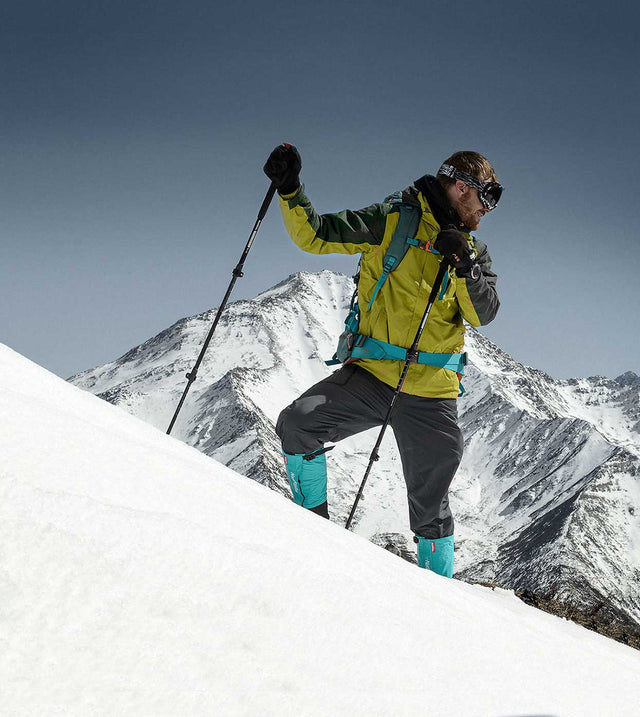What to Wear for Hiking: A Complete Guide to Proper Hiking Attire
Choosing proper hiking clothing is essential for both safety and comfort on the trail. With countless outdoor gear options available, selecting the right hiking attire can seem overwhelming. Yet understanding the fundamental principles of layering and fabric choice will help hikers make informed decisions about their clothing choices.
Proper hiking gear serves many purposes: regulating body temperature, protecting from the elements, and ensuring comfort during extended periods of activity. After reading this guide you’ll exactly what you need and what not to bring hiking.
Base Layers: Hiking Clothes for Comfort
Base layers form the foundation of any effective hiking clothing system. These garments sit directly against the skin and play a crucial role in moisture management and temperature regulation. Merino wool offers excellent odor resistance and temperature control, while synthetic materials provide effective moisture-wicking properties at a more affordable price point.
Essential base layer considerations include:
-
Avoid cotton fabrics, which retain moisture and can lead to blisters and discomfort
-
Choose materials that dry quickly and move moisture away from the skin
-
Merino wool naturally resists odor buildup during extended activities
-
Long-sleeve base layers provide UV protection while allowing temperature adjustment through sleeve management
UV protection is a critical consideration often overlooked by hikers. Harmful UV rays can cause significant sun damage, particularly at higher elevations where UV intensity is higher.
Mid Layers: Insulation and Temperature Control
Mid layers offer insulation for cooler conditions without the bulk of heavy outerwear. Fleece jackets deliver reliable warmth and breathability. Down insulation offers excellent warmth-to-weight ratios but loses insulation properties when wet. Synthetic insulation maintains warmth even in moist conditions, making it ideal for unpredictable weather.
The key to effective layering systems is ease of adjustment. Hikers should be able to add or remove layers quickly without removing their pack or completely reorganizing their clothing. Full-zip designs offer superior versatility compared to pullover styles.
Rain Protection Outer Layer
A quality rain jacket is essential protection against unpredictable weather conditions. Gore-Tex and similar waterproof-breathable fabrics offer excellent protection, though they require proper maintenance to maintain their effectiveness over time.
Effective rain protection can make the difference between an enjoyable hike and a miserable experience. Weather conditions on trails are notoriously unpredictable, making waterproof outerwear a critical safety component.
Rain pants may seem unnecessary until conditions deteriorate. They become invaluable during water crossings, heavy precipitation, or when navigating through wet vegetation.
Lower Body: Hiking Pants and Footwear Considerations
Hiking pants offer comprehensive protection from sun exposure, insects, and trail hazards. During hot weather conditions, many hikers prefer shorts for better ventilation and cooling, accepting the trade-off in protection.
The pants versus shorts decision typically depends on:
-
Temperature and weather conditions
-
Trail environment and vegetation density
-
Personal preference for protection versus ventilation
-
Insect activity levels
Footwear selection varies widely based on trail conditions and personal preference. Traditional hiking boots offer ankle support and protection but may cause discomfort during long hikes. Hiking sandals work well in certain conditions but leave feet vulnerable to impacts and debris.
Essential Accessories Often Overlooked
Sun protection extends beyond clothing to include hats, sunglasses, and sunscreen. These items are frequently forgotten but become critical for preventing painful sunburn and eye damage during extended outdoor exposure.
Quality socks deserve special attention as they significantly impact hiking comfort. Wool or synthetic socks that resist bunching and hot spots can prevent blisters and foot pain that can derail an otherwise enjoyable hike.
Common Clothing Mistakes to Avoid
Several clothing choices consistently lead to uncomfortable hiking experiences:
Denim jeans are unsuitable for hiking due to their weight, poor drying properties, and lack of stretch for movement.
Cotton garments in general perform poorly in outdoor conditions. While a cotton t-shirt might work for short summer hikes, cotton clothing becomes problematic during longer outdoor adventures due to moisture retention.
New hiking boots worn on extended trips often result in serious blisters and foot injuries. All gear should be tested during shorter hikes before committing to longer adventures.
Seasonal Considerations for Hiking Attire
Summer hiking strategy focuses on staying cool while preventing sun damage. Light-colored clothing helps reflect heat, but adequate coverage remains important to prevent harmful UV exposure. Long sleeves can actually keep hikers cooler than exposed skin when sun intensity is high.
Winter hiking requires careful attention to the layering system. Hikers must balance staying warm during rest periods with preventing overheating during active hiking. The layering system becomes crucial as body temperature fluctuates with activity level.
Spring and fall present the most challenging conditions for clothing selection due to variable weather patterns. Temperatures may start cold and become hot, or change rapidly throughout the day. Hikers should pack more layers than initially seem necessary.
Foot Care and Water Management
Water crossings present a choice between keeping feet dry or accepting wet conditions. Hikers can bring alternate footwear or focus on shoes that dry quickly after exposure to water.
Both approaches have merit. Waterproof footwear works well until water enters, after which feet remain wet for the duration of the hike.
Budget-Conscious Gear Acquisition
Quality basics outperform numerous mediocre items. Investing in one high-quality mid-layer proves more effective than purchasing multiple inferior alternatives.
Building a hiking gear collection gradually allows hikers to make informed choices based on actual needs rather than assumptions. Many outdoor gear manufacturers now use recycled materials, offering environmentally conscious options without compromising performance.
Quality Hiking Gear from Naturehike
For hikers seeking reliable, affordable outdoor gear, Naturehike offers a comprehensive range of hiking clothing and equipment designed for all weather conditions. From moisture-wicking base layers to waterproof rain jackets,
Explore Naturehike's complete collection of hiking gear to find the perfect clothing system for your next outdoor adventure.



0 Comments
There are no comments for this article. Be the first one to leave a message!